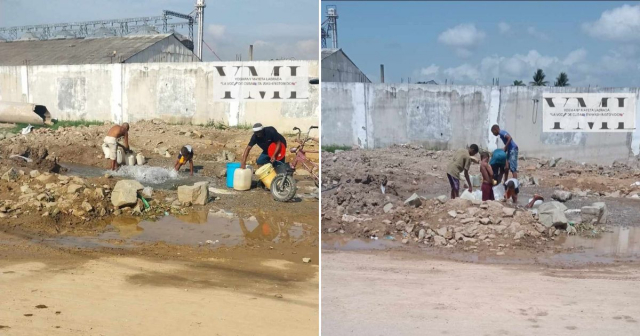A young Cuban complained about the water shortage that the population of La Reforma, in the special municipality of Isla de la Juventud, is suffering, as they have not had running water for almost a week.
A video shared by X user @DiazVismar38292 helped amplify the complaint made by the young man, who explained the situation faced by the nearly 1,800 residents who, according to EcuRed, make up the population of La Reforma.
"We have been without water for four days. Look at the water, what we are drinking. This is not a lie, this is here in the town of La Reforma. This is the water we are drinking from the wells that we are filling," said the young man, showing the dirty water stored in some containers in the yard of the house.
At the end of February, the ruler Miguel Díaz-Canel visited the Isle of Youth and learned about the critical situation its inhabitants face regarding water supply. A report from the official television news celebrated that "the population will experience a significant improvement with the arrival of five pumps that will benefit an equal number of communities."
The Island of Youth has 15 reservoirs and a total storage capacity of approximately 230 million cubic meters of water. According to the portal isladelajuventud-cuba.com, most of these reservoirs aim to ensure irrigation for agricultural areas, fish farming, and some for supplying water to the population and hatchery stations.
At the end of April, the delegate of Hydraulic Resources in the Isle of Youth, Ihosvany Juliá, stated that they were working "hard" to ensure the water supply for the 83,583 inhabitants of the territory, despite the drought.
According to the portal redisla.gob.cu, the official reported that water is delivered through the aqueduct network to 96.1 percent (%) —equivalent to 80,343 people— while 1.9% benefits from this public service through tanker trucks.
Additionally, he pointed out that -as part of the energy matrix change program of the National Institute of Hydraulic Resources (INRH)- two pumping systems with photovoltaic solar panels were installed in the municipality, and in the future, another 24 will be installed to strengthen this type of infrastructure that ensures water service from natural sources to the rural area.
By that time, the reservoirs accumulated 147.8 million cubic meters of water, which represented 64% of the total storage capacity in the territory. Of those 13 reservoirs, La Guanábana was affected by a total drought, and La Fe was below 25% of its total filling capacity.
According to Juliá, the territory was facing a significant drought. In April, the rainfall in Isla de la Juventud was 32.8% of the historical average, with only 17 millimeters of rain. From November to April, the rainfall represented 47% of the historical average for the period.
At the end of May, the president of INRH, Antonio Rodríguez Rodríguez, acknowledged that around 700,000 people in Cuba were not receiving water daily due to power outages, as the hydraulic sector is the second largest consumer of electricity after the demand from the population.
The executive described the distribution of drinking water as "a very complex situation," pointing to continuous power cuts as responsible, which he referred to as "energy contingency."
Although the number of people without daily access to water supply due to blackouts is alarming, only half of the Cuban population receives the precious liquid consistently, while the rest does not due to various reasons, such as drought, lack of distribution network, breakdowns, corruption, among others.
What do you think?
COMMENTFiled under:
